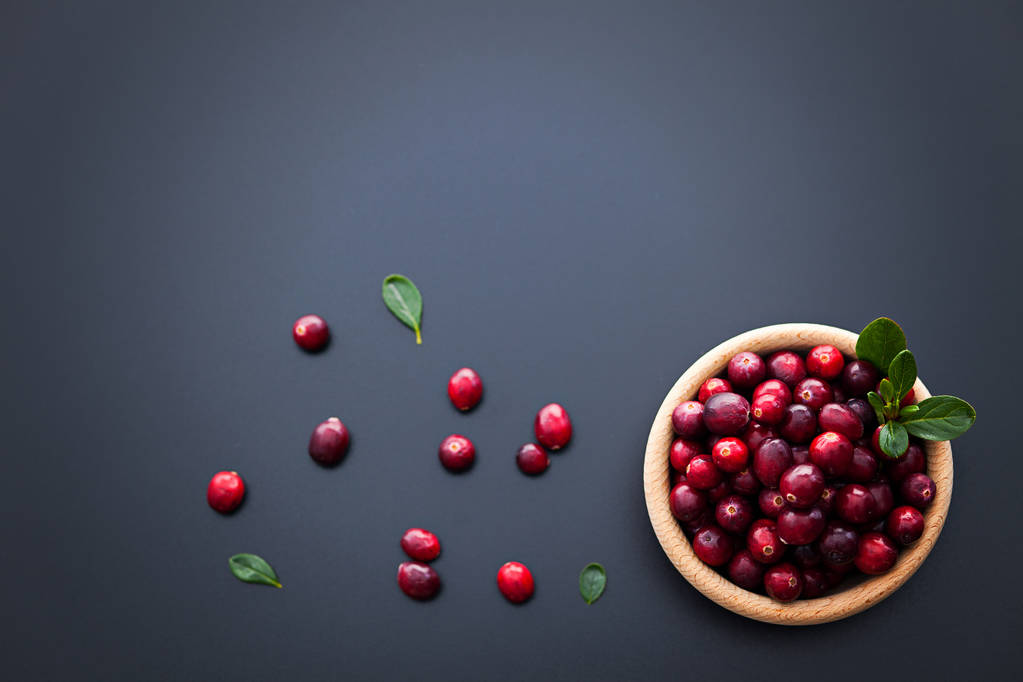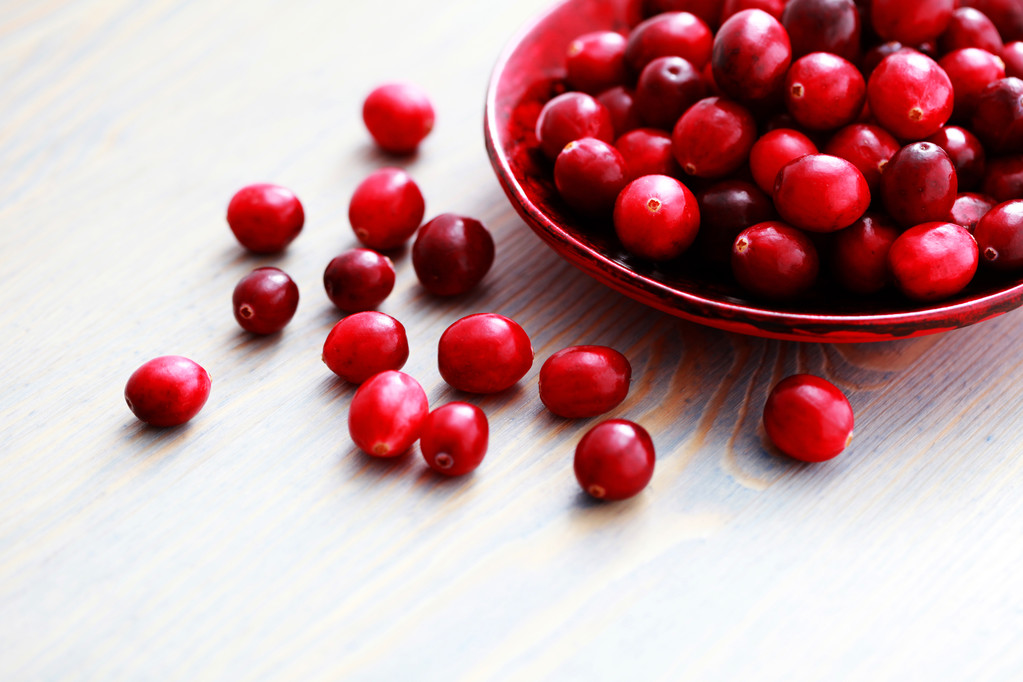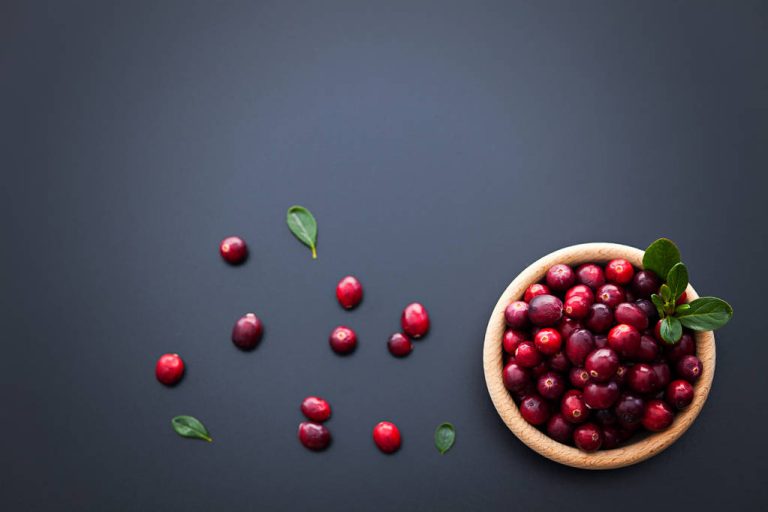The cranberry is considered a superfood: it is said to help with cystitis, help you lose weight and even prevent cancer. But what can the miracle berry really do?
The cranberry, in German cranberry or cranberry, enjoys great popularity as a component of numerous recipes and as cranberry juice either pure or in various cocktails. The bright red or dark red colored cranberries are often confused with cranberries, but are much larger and have threads reminiscent of a crane’s beak – hence the name cranberry.
In addition to their versatile uses in the kitchen, the red cranberries are also considered miracle berries that are said to help against urinary tract infections in women. In addition, the berries have a draining effect and are said to help with weight loss. Cranberries also contain antioxidants and flavonoids, which can help fight cancer and slow down the aging process. They are also considered superfood and are offered accordingly. We took a close look at the cranberries – and came across a few question marks.

Botanical information about the cranberry plant
The cranberry plant is actually an evergreen dwarf shrub of the heather family. Cranberries belong to the blueberry genus, and the cranberry bush is also reminiscent of them: the branches “crawl” over the ground, grow up to one meter per year and take root. This creates a kind of bush carpet in a cranberry plantation or in areas with larger wild occurrences, where individual cranberry plants cannot be distinguished from each other. This mossy shrub carpet also gave the cranberry its German name.
The large-fruited (or American) cranberry, as the cranberry is correctly called, is native to the eastern high moors of North America, from Canada in the north to the south to Tennessee and Virginia in the USA. The cranberry needs peaty, loose soil and cold, snowy winters, then it thrives best. In Germany, the dwarf shrub has already been established in some bogs, but the cranberry also quickly feels at home in the garden at home, provided the right soil is available, and is very easy to care for. The cranberry bush blooms from May to August with white or pink flowers. The fruits are ripe in autumn, from the end of September, and can be harvested.
Production and harvest of cranberries
The ripe cranberries are about the size of gooseberries, bright red, some varieties also dark red to black, and have four air chambers that give the berries buoyancy in the water. The commercial production of cranberries makes use of precisely this boost. Because a cranberry is lighter than water, the fields are completely flooded during the so-called “wet harvest”. A special machine then creates small eddies in the water, which swirls 90 percent of the ripe cranberries off the bushes.
The berries floating on the water are then skimmed off. Since cranberries jump up like a rubber ball with their air chambers intact, they are sorted straight away when they are harvested: the harder ones are sold fresh or dried, while the softer ones are processed into juice, jam, sauce or the like. The world’s largest producer is the USA, which is also the largest consumer of cranberries.
The cranberry in the sustainability check
Almost all cranberries that end up in our store, whether processed, dried or fresh, come from the USA. In any case, the cranberry has a long transport route behind it and gets an ecological minus point for it. But even the cultivation regions in sensitive ecosystems such as moors or moor-like areas and the complete flooding during wet harvesting do not necessarily pass the sustainability check. Pesticides to combat the fungal infestation that often occurs due to monocultures, the washing out of pollutants into the groundwater during harvesting and interventions in sensitive biotopes are a further minus for us.
Initiatives for sustainable cranberry cultivation, such as the study by the University of Wisconsin, show that there is another way. Organic quality and responsibility for the environment are becoming increasingly important to growers. Nevertheless, it is better to inquire in organic or natural food stores whether local cranberries can also be bought. You can be lucky at harvest time in autumn. And garden owners can grow and harvest their own cranberries – due to the long shelf life of the red cranberries, especially boiled or dried, this is our tip when it comes to sustainability for cranberries.
A small selection of the best cranberry recipes
The taste of fresh cranberries is sour and very tart, so that they are almost inedible on their own. Dried, they taste sweeter and only slightly tart. Fresh cranberries are therefore mainly used for hearty dishes such as meat and game. The American equivalent of our cranberry sauce, the cranberry sauce is a must-have with Thanksgiving turkey.
Alternatively, the cranberries can also be used to make a delicious cranberry chutney or cranberry relish. The berries are also well suited, for example, as a special something in sauerbraten from chicken. The dried cranberry is used for desserts and sweet dishes, as well as an ingredient in muesli or for cranberry muffins and cookies. The cranberries are also an insider tip for anyone who doesn’t like raisins: simply replace them with dried cranberries, and cakes often taste a little better with them.
The versatile one in a glass: cranberry juice
Cranberry juice can be used in drinks in just as many ways as fresh and dried cranberries can be used in the kitchen. Undiluted and unsweetened, cranberry juice contains most of the vital substances, but is also correspondingly sour and tart. An infinite number of variations can be mixed with cranberry juice: Diluted with water as a refreshing drink in summer, as part of a smoothie – and of course cranberries and cocktails also belong together. A cocktail bar is incomplete without cranberry juice, an ingredient in some of the most popular cocktails.
Cranberry as a superfood
Cranberries are definitely part of the kitchen and at the bar, but is it true that the red berry is also good for your health and is even traded as a superfood? When fresh, the cranberry contains a large number of phytochemicals, which have earned it a reputation for helping women with urinary tract infections in particular. Either by actively draining them and fighting the bacteria that cause the infection, or by having a regular glass of cranberry juice to prevent a new bladder infection.
The effect is disputed among experts. A 2011 meta-study examined the results of numerous tests of cranberry juice as a remedy for the predominantly female condition. The results were rather sobering: the juice was not more effective than the placebo or plain water in any of the studies considered. There wasn’t enough relevant data at all on cranberry tablets or capsules to draw any conclusions. However, studies are currently underway to find out how much “active” ingredient is needed in capsules or tablets to achieve an effect.
A very recent 2016 study published in the American Journal of Clinical Nutrition seems to prove the opposite. Fewer infections were found in women with a tendency to cystitis if they drank cranberry juice regularly. But this study is not without controversy. Funding from the world’s largest cranberry juice maker and research staff from the company’s employees make the results somewhat dubious (vox.com). As far as the effect of cranberries on urinary tract infections is concerned, the following still applies: one does not know exactly.

So isn’t the cranberry healthy?
Just because the cranberry has no proven effect against urinary tract infections does not mean that the red berry is not healthy or even unhealthy. Fresh cranberries contain around 13 g of vitamin C per 100 g, a lot of vitamin A and antioxidants – they ensure the reputation as a “superfood”. These substances are also found in the pure, undiluted juice, which tastes just as sour and tart as the cranberries themselves.
With 46 kcal per 100g and only 12g of carbohydrates, fresh cranberries are also very suitable for diets. However, vitamin C is sensitive to heat – cooking, roasting or baking destroys the vitamin, as does the drying process. The dried cranberry therefore no longer contains any vitamin C or vitamin A and 100g of the dry berries have 319 kcal and contain more than 75 percent carbohydrates. Sounds only conditionally suitable for dieting, but the high mineral content makes up for it.
The cranberry is an excellent natural source of potassium, sodium and magnesium, as well as providing copper and manganese. Dried cranberries in muesli or as a snack between meals are a very healthy superfood in terms of a balanced diet.

